
In Memoriam: Captain Charles Robert MacVean, USN, (Ret.), PhD
Nam, he was very compassionate with informing a crew member of a tragedy at home.” His crew knew their captain’s personal interest in each of them, and he saw an inspiring example of dedication in them.Following his Naval service, Dr. MacVean held numerous positions in industry, including Honeywell/Hydro Products, eventually becoming Vice President and General Manager. In 1989, Dr. MacVean became the Vice President for Business Development at Horizons Technology, a San Diego company developing and providing mission planning software for the U.S. Navy, U.S. Marine Corps, and overseas allies
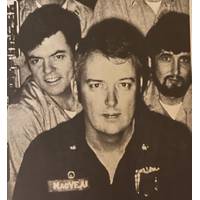
In Memoriam: Captain Charles Robert MacVean, USN, (Ret.), PhD
Nam, he was very compassionate with informing a crew member of a tragedy at home.” His crew knew their captain’s personal interest in each of them, and he saw an inspiring example of dedication in them.Following his Naval service, Dr. MacVean held numerous positions in industry, including Honeywell/Hydro Products, eventually becoming Vice President and General Manager. In 1989, Dr. MacVean became the Vice President for Business Development at Horizons Technology, a San Diego company developing and providing mission planning software for the U.S. Navy, U.S. Marine Corps, and overseas allies
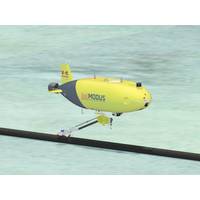
Kawasaki Picks Sonardyne Tech for Its SPICE AUV
integration of raw sensor data at a low level provides unprecedented navigational performance and precision for subsea vehicles, consistently outperforming competing systems in customer trials. The SPRINT-Nav 700, selected by KHI, is equipped with the highest performance available sensors, including Honeywell ring laser gyros and accelerometers," Sonardyne said.Stinger Prepping Kawasaki's SPICE AUVSonardyne's AvTrak 6 combines the functions of transponder, transceiver and telemetry link in one low power unit, leaving more payload space and power for other instruments. According to
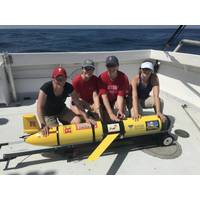
INTERVIEW: Rutgers University Uses Slocum Glider for Ocean Acidification Study
;t been developed to be able to withstand changes in pressure – going from surface to the bottom – which is what the gliders do when they're profiling. So what was the solution?It was a collaborative research with Sea-Bird Scientific, MBARI, Scripps Institute of Oceanography and Honeywell to develop pH sensors able to withstand the pressure changes. They started testing them on the Argo Profiling Floats, and once they were successfully tested on those floats, I knew it was time that we could possibly try to use them on a glider. I reached out to Seabird Scientific and Teledyne Webb
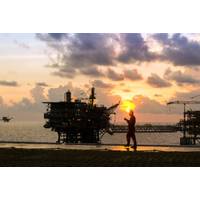
Petronas to Use Honeywell UOP Tech at Kasawari Gas Field
Malaysian oil and gas company Petronas Carigali will use Honeywell UOP modular natural gas processing technology at the Kasawari gas field offshore Sarawak, Malaysia.Honeywell UOP said Petronas would use its technology in the development of a 900 million standard cubic feet per day (mmscfd) offshore gas purification plant in the Kasawari gas field in the South China Sea. The Kasawari gas field was discovered by Petronas in 2011.UOP’s acid gas removal technology that removes contaminants such as carbon dioxide, hydrogen sulfide, and mercury from natural gas, will be used at the facility. Once
Honeywell Builds ICSS for BP Offshore Platform
The U.S. engineering and automation conglomerate Honeywell International said that it has been chosen to design and deliver an integrated control and safety system (ICSS) to remotely support BP’s Cassia compression platform located offshore Trinidad and Tobago.The Cassia compression project involves the installation of a new platform, Cassia C, for compressing the gas produced by the nearby existing fields in the Greater Cassia Area.BP Trinidad and Tobago (BPTT), held by BP (70%) and Repsol (30%), is the owner and operator for the Cassia C platform. The platform is BP’s first compression
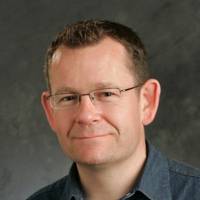
WFS Appoints Darroch as CTO
costs over the life of the offshore structure.Darroch brings with him a wealth of experience in leading engineering teams and the development of Internet of Things product strategies, most recently where he was globally accountable for the delivery of an Intelligent IoT Edge ecosystem in Honeywell’s ‘Connected Enterprise’ organisation.Prior to Honeywell, Darroch spent several years at Artesyn (formerly Emerson) as Senior Director and Vice President of Engineering, leading the planning and execution of the company’s global software and product engineering strategies
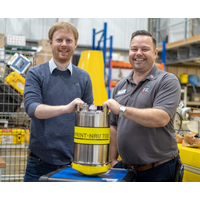
Sonardyne’s SPRINT-Nav 700 selected for new under-ice AUV
navigational performance and precision for subsea vehicles. Consequently SPRINT-Nav has consistently outperformed competing systems in trials carried out for a number of customers. The SPRINT-Nav 700, selected by the NOC, is equipped with the highest performance available sensors, including Honeywell ring laser gyros and accelerometers, and has a conservative quoted accuracy of 0.04% 2dRMS (≡0.017% CEP50).Geraint West, Global Business Manager Oceanographic, Sonardyne, says, “NOC selected SPRINT-Nav 700 to meet its requirements for an advanced dead-reckoning system in a single unit
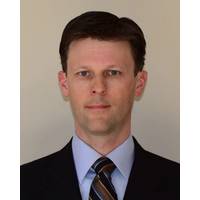
Kraken Appoints Dillon as Chief Scientist
SAS imaging and bathymetry software. He also invented Kraken’s AquaTrak Correlation Velocity Log, participated in numerous sea trials and was the principal investigator for a multi-year DRDC funded project on repeat-pass interferometry.Previously Dr. Dillon was a control systems engineer at Honeywell Aerospace, a flight test instrumentation engineer at Canada’s National Research Council (NRC) Flight Research Laboratory and a research officer in guidance, navigation and control at NRC. He developed the inertial/GPS navigation system and Kalman filtering software used in all NRC research
 December 2025
December 2025





